Asset Management: From Traditional to a Digital Business
Source: Äri-IT Spring 2025
Authors: Külli Rebane, BCS Itera Business Manager, and Erol Kunman, BCS Itera ERP Consultant
At first glance, the service industry and asset management might seem simple. You grab a cloth and a bucket, spare parts, or a screwdriver and get to work. In reality, it’s far more complex.
A business where people are at the core is often unpredictable and difficult to plan. This is exactly why the digitalization of processes is becoming a critical competitive advantage, and for many, it already is.
The key to success lies in reliability, flexibility, and efficiency, which lead to transparent pricing and high quality—and, of course, the people. Manual data entry, paper-based workflows, and fragmented information systems slow down work and increase the risk of errors. In contrast, automated data management, real-time maintenance tracking, and smart solutions help improve service quality and boost a company’s competitiveness.
The industry’s direction is clear: the use of smart management platforms, artificial intelligence, and IoT solutions will make management processes more efficient and predictable.
It All Starts with a Good ERP System
The Estonian market is becoming increasingly competitive, making it crucial to find tools that give a company an edge. An ERP (Enterprise Resource Planning) system allows all business processes—from accounting and inventory management to work schedule creation and reporting—to be consolidated into one system. The result is less room for error, fewer assumptions, less randomness, and less reliance on verbal information. This is vital for companies that want to grow and stay in the market.
Today, nobody should be doing manual work that machines can do faster and more accurately. For example, in one company where recruitment was a daily activity, job applicant documentation was handled on paper by four different employees. Each one entered the data into separate systems and spreadsheets, causing wasted time and errors. After implementing an ERP solution, the entire process was replaced by a single entry, saving time and ensuring data accuracy. Similar success stories can be found in many other fields.
ERP for Asset Management: What, for Whom, and Why?
Most ERP solutions are universal and suitable for many businesses, but they may not address the specific needs of a particular industry. Microsoft has created the option for partners to supplement their ERP systems with specialized modules. For example, a dedicated asset management module has been developed for Dynamics 365 Business Central, targeting companies that provide services at specific locations, such as security, cleaning, waste management, or electrical services. This module allows for comprehensive management of asset-centric business processes, from service delivery and billing to object-based payroll. All essential information is in one place and easily accessible.
What Is an Asset-Centric Business?
In an asset-centric business, a company’s activities and processes are organized around objects (or assets), not just clients or contracts. The object is the central unit for planning resources, creating work schedules, making budgets, and calculating material and labor costs.
For example, a cleaning company that services two different hotels might provide daily, thorough cleaning at one with the same team, while at the other, cleaning occurs once a week with a different team each time. Similarly, a security company might receive a special request from a client not to enter a yard where guard dogs are roaming freely. If such specifics are noted in the system and appear as red warning signs on an employee’s phone, the risk of errors and unpleasant situations is significantly reduced.
An asset-centric ERP solution helps manage and optimize service delivery according to the specifics of each location, making work organization simpler, more accurate, and more efficient.
What Is the Added Value?
The biggest advantage of the Business Central asset solution is the consolidation of data into one system. All data related to an asset—financial information, sales history, budgets, assets, and personnel—is easily accessible and managed in one place. This supports daily sales activities and simplifies management decisions.
Another significant value is the automation of the billing process. The solution generates periodic invoices based on agreed-upon services and unexpected materials used, reducing manual tasks and errors.
Third, the asset solution helps to better track and manage the resources needed for service delivery—employees, their skills, equipment, and materials. Asset-based work scheduling ensures the right people with the right equipment are at the right place at the right time.
This asset-centric approach gives the client confidence that all ordered work will be completed. No coffee stains will be left on the carpet, and all cables will be installed correctly. Employees also feel secure because the software handles remembering special agreements. Correct e-invoices reach the client’s ERP system on time, without the need for manual checks or disputes. Employees know exactly when and with what equipment they need to be at a location. The result is happier clients, more content employees, and lower costs for the company.
Yes, My Company Needs This!
Implementing an asset solution is not difficult but requires careful consideration of existing processes and, if necessary, re-organization. When a company’s needs and goals are clear, and the team is ready, a significant step toward digitalization has been taken.
In conclusion, the customer experience is a vital part of any business. When customer data is managed in spreadsheets and emails, service quality suffers. Manual management leads to information loss, inaccurate data, and a poor employee experience.
An asset-based ERP solution consolidates all employee, activity, and client data onto a single platform, providing a holistic overview of client relationships and enabling personalized service.

